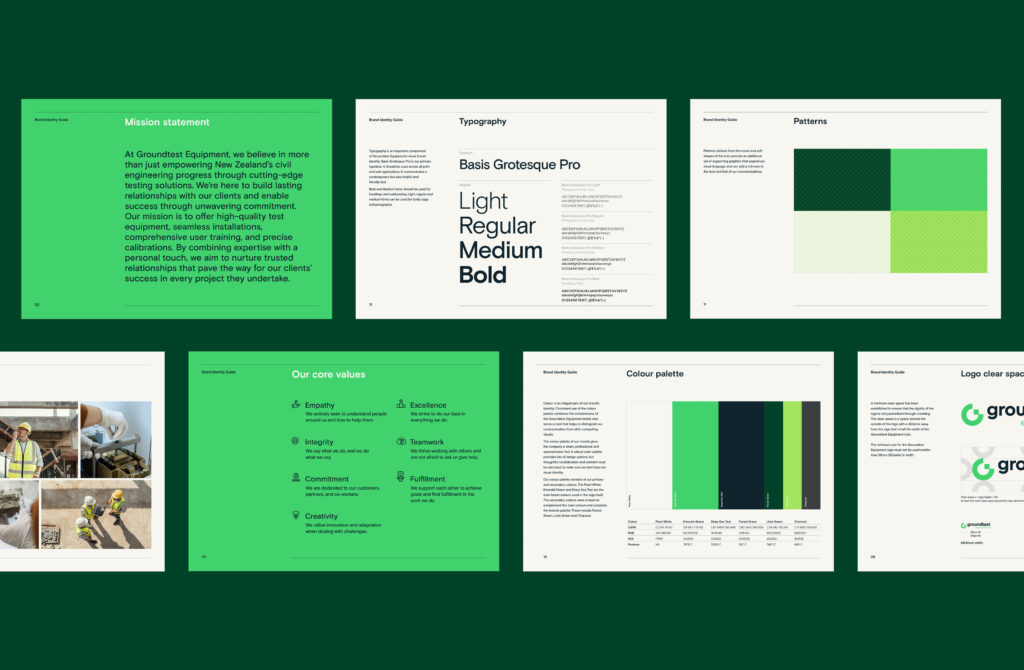Insight – 28/02/2024
Learn how to define an authentic brand personality that resonates with your audience.
Brand personality refers to the set of human characteristics associated with a brand. Just like individuals, brands can have traits such as sincerity, excitement, competence, sophistication, or ruggedness, among others. These traits shape the way consumers perceive and interact with the brand, increasing loyalty and driving purchase decisions. A strong brand personality is essential to differentiate the brand from competitors and create an emotional connection with the target audience. The personality traits should align with the brand’s core values and messaging, as well as resonate with the target market’s needs and aspirations. Developing and maintaining a consistent brand personality across all touchpoints can help the brand to build trust, credibility, and recognition.
Defining your brand personality is vital for creating a strong and memorable brand image. It helps to differentiate your brand from competitors, creates a consistent and authentic brand experience, and fosters an emotional connection with your audience. Without a clear brand personality, your messaging and visual identity can become muddled and ineffective. Defining your brand personality also aids in guiding decision-making processes, such as which marketing channels to use and what type of content to create. Overall, defining your brand personality is essential for building a successful and distinct brand that resonates with your audience.
Establishing this personality is all about connecting with people on an emotional level — and when brands do it correctly, they can build relationships and loyalty with their customers. In fact, 88% of consumers say authenticity is a crucial factor when deciding which brands to support. If the tone and character of your brand don’t resonate with customers, they’re probably not going to buy from your company.

Key components of a strong brand personality
A brand’s personality framework should complement its products and the lifestyle its target audience wants to emulate. However, brand personality should also be about the big picture. The ingredients that make up a strong brand personality should include:
- Clarity. A clear and concise brand personality helps consumers understand what your brand stands for and represents. For example, Kathmandu is a brand that embodies ruggedness, which is reflected in its commercials and marketing materials through visual imagery that highlights rugged terrain, harsh weather conditions, and challenging situations while emphasizing action and adventure.
- Consistency. Consistent branding helps build a strong brand image and increase revenue by 24%. Brand guidelines are key to showing brand personality traits across the board. Social media accounts, marketing campaigns, and marketing materials should all reflect the brand story, personality, and tone of voice you chose when you built your brand.
- Relatability. Consumers are more likely to support brands they can relate to and connect with on a personal level. In fact, 46% of consumers in the United States are willing to pay more for products from brands they trust. If your brand has a personality people can connect with, that connection can then develop an enduring trust.
- Memorability. Brands with strong personalities are easier to remember and recognize, making them more appealing to consumers. Brand awareness is powerful — 82% of people searching for a product or service online select a familiar brand first. A positive brand experience and a brand personality that highlight differentiation (what sets you apart from your competitors) can make your brand hard to forget.
Understanding and incorporating these brand personality traits into your branding strategy can help you to effectively communicate your brand’s identity, values, and essence to your target audience.
1. Know who your target audience is.
The first step to defining a brand personality is to understand your target audience. Start by conducting research to gather insights about your target audience, including:
- Demographics: age, gender, location, education, income, and family status
- Psychographics: values, lifestyles, attitudes, interests, and beliefs
- Behavior: purchase and usage patterns, preferences, brand loyalty, and customer journeys
Once you have a better understanding of your target audience, create a buyer person. Make sure to research and include your audience’s pain points, needs, and aspirations as they relate to your products or services.
2. Define what makes your brand unique.
The narrative around the need to differentiate is growing tiresome. The more we talk about it, the more brands and products seem to drown in a sea of sameness.
The more crowded the market, the harder it is to create uniqueness. Companies often operate as if a spell has been cast over them. They build almost identical trade-show booths staffed with salespeople who wear the same clothes and use the same language and selling tactics. What we often see in brands is not differentiation, but imitation.
The way you deliver your service, from the first inquiry to the last contact, can be a great way to differentiate your business
I often ask clients to walk me through their customer service process, from start to finish, and we uncover all kinds of gems their competitors don’t offer. Things like guaranteed call-back times, or dedicated account managers, lollipops snuck into deliveries, or hand written thank you notes.
If you don’t think your product or service is unique, write down all the features you offer. I mean all of them; even the ones you think are too small for anyone to care about. Especially the ones you think are too small for anyone to care about. Maybe you have an extra stage in your quality control process. Maybe your packaging is made from recycled materials or your business is carbon neutral. In your list will be at least a few features that your competitors just aren’t talking about. It could be because they don’t offer them, which gives you a unique selling point right there. It could be that you have found a feature you can turn a spotlight on to make your business sound unique.
3. Choose your brand’s core characteristics.
Brand characteristics are the unique attributes and value that differentiate a brand from its competitors. These can include traits such as quality, reliability, innovation, design, and customer service. Authenticity and consistency are also key brand characteristics that build trust and loyalty with consumers. A strong brand can foster positive emotions and connections with its audience, leading to increased customer loyalty and advocacy. It is important for businesses to identify and nurture their brand characteristics to differentiate themselves in a competitive marketplace and create a lasting impression on consumers.
To define a brand’s characteristics, start by identifying the company’s core values, mission, and vision. Try to focus on using positive adjectives such as dependable, innovative, or down-to-earth. Once you have created a broad list, prioritize and narrow down these traits to a select few that align best with your audience and your brand’s sense of individuality.
Then, analyse the target audience and the market to understand their needs and preferences. Looking at successful brands in the same industry can also provide insights in creating a distinctive identity. It’s important to keep in mind that brand characteristics are not static and can evolve over time. Regularly reviewing and updating them can help a brand stay relevant and competitive. Ultimately, a strong brand identity can increase customer loyalty and drive long-term success.

4. Create a brand style guide
A branding guide or brand style guide is a collection of elements that define how you want your brand to be perceived. It defines the messages and values you want your brand to be associated with. It’s a document that helps designers, as well as marketing managers curate a distinctive look and feel for a brand.
There is no one answer to the question “what should a brand guide include”. But, there are a few elements that you should definitely bear in mind when you’re creating your brand guide. All brand guidelines should include: brand’s tone of voice, color palette, typography, logo usage, imagery, and more. In conjunction with a personality statement, a style guide helps ensure consistency in all your branding and marketing materials across platforms, which can increase brand recognition and strengthen your brand equity.

5. Evolve your brand’s personality
Our brand’s personality is not a static concept, it should evolve over time according to our target audience’s preferences. Evolving our brand’s personality must go hand in hand with the changes in the market. Remaining true to our core values while adapting to new trends is a delicate balance that we must be aware of. Evolving our brand’s personality requires a deep understanding of our audience, their motivations, and how they perceive our brand. We must be willing to take risks and experiment with new approaches, while always prioritizing our customers’ satisfaction. Our brand’s personality should reflect our company’s culture, beliefs, and values, while still being flexible enough to adapt to new realities. Ultimately, having a dynamic brand personality can keep our audience engaged and help us stay relevant in an ever-changing landscape.
Stay open to adapting and evolving your brand personality over time as your company or the market changes and grows. Flexibility and the ability to align with shifting customer expectations are crucial to long-term success. To maintain a competitive edge, keep an eye on your competitors and how their brand personalities evolve so you can adjust as needed.
Key takeaways
Brand personality is a set of human characteristics that are attributed to a brand name. Common ones are excitement, sincerity, ruggedness, competence, and sophistication. Brand personality is different than its imagery, though these creative assets should reflect a company’s brand personality.
A company’s brand should appeal to its target customers. When companies define and display their brand personality, customers who see themselves as having that personality can identify with the brand.
Say Hello!
Studio Nine
33-45 Hurstmere Rd
North Shore, Takapuna
M. +64 21 1306 713
katrina@studionine.co.nz
© Studio Nine
Branding & Graphic Design NZ

